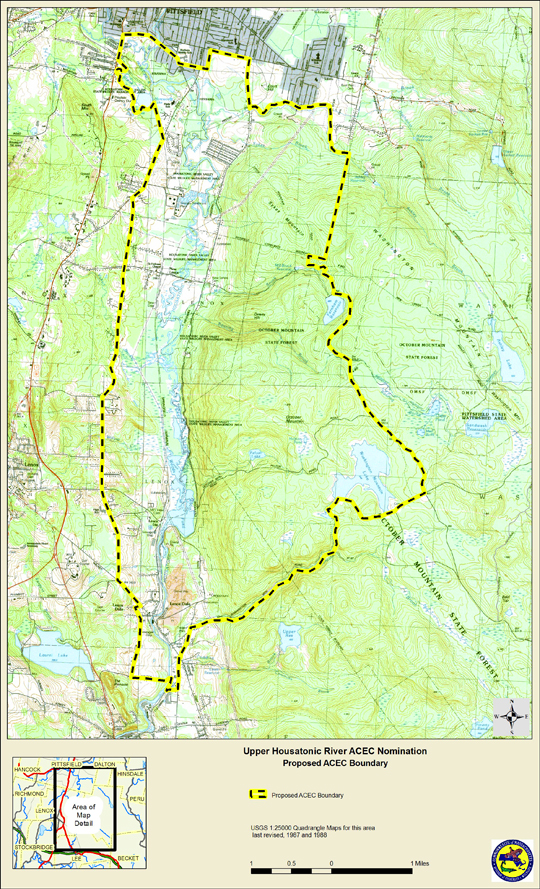Jul 18 2008
Save the Housatonic!
Until recently, General Electric (GE) had a major industrial facility in Pittsfield, the largest city in Berkshire County, Massachusetts. At its Pittsfield site along the Housatonic River, from the mid-1930s to the mid 1970s, GE used the man-made toxic chemical polychlorinated biphenyl (PCB) as an insulating fluid in its electrical transformers. PCBs are poisonous to people, animals, birds, fish, and other wildlife.
During those years, a massive amount of PCB-contaminated oil ended up in the Housatonic River. This contaminated oil has adhered to riverbank soils and the river sediment, and has severely compromised the health of the Housatonic River ecosystem.
The United States Environmental Protection Agency (EPA), in coordination with the Massachusetts Department of Environmental Protection (MADEP), has been charged with working with GE to clean the river. Under a Consent Decree signed by the parties, GE cleaned the first half-mile of the river adjacent to the former GE industrial facility. EPA cleaned the next mile and a half downstream from the plant.
Under the terms of the Consent Decree, GE was charged with developing a Corrective Measures Study (CMS) to investigate the need for, and possible alternative ways of, cleaning the Rest of the River – that section of the river from the confluence of the East and West Branches of the Housatonic down through Berkshire County, Massachusetts into Connecticut to the Long Island Sound.
GE is proposing a 10-year construction and restoration project involving the excavation and disposal of over 225,000 cubic yards of sediment and soil, at an estimated combined cost of $184 million for the Housatonic River.
Many concerned citizens are worried about what this might mean for the River. While we strongly support the clean-up of PCB contamination from the river sediments to make the river safe for wildlife and humans, we have strong reservations about the GE proposal.
Some would like GE to clean more of the River; some would like GE to use new and innovative technologies to break down the PCBs rather than dredge the River and landfill contaminated sediment and soil; and some are very concerned that they may live near a PCB-dump like the one adjacent to the Allendale School in Pittsfield. Everyone wants the process to end with a clean and beautiful Housatonic.
Mass Audubon has written that the GE proposal:
… contains insufficient information to evaluate the feasibility and cost of restoration of remediated areas. Given the sensitivity of the habitat along the Housatonic River and its floodplain, GE must be held to accordingly high standards for this clean up, which should begin with avoidance and minimization of adverse impacts to critical habitats. Where there is no alternative but to destroy habitats, restoration of affected areas to fully functional habitats must be required by EPA.
One important step we can take to protect our River is to designate the 12.9-mile corridor of the Upper Housatonic River as an Area of Critical Environmental Concern (ACEC). This stretch of the Housatonic is comprised of a complex and rich ecosystem that includes the river itself, adjacent wetlands and floodplains, several tributary streams, abundant wildlife, concentrations of rare species, and the steep, forested, western slopes of October Mountain State Forest.

You can read the Nomination of the Upper Housatonic River as an Area of Critical Environmental Concern, submitted by Save The Housatonic to Ian A. Bowles, Secretary, Massachusetts Executive Office of Energy and Environmental Affairs, August 29, 2008. Download the entire ACEC Nomination Document [180 pages, 27.6 MB]
To download individual sections of the ACEC Nomination Document go to our Documents Page.
No responses yet